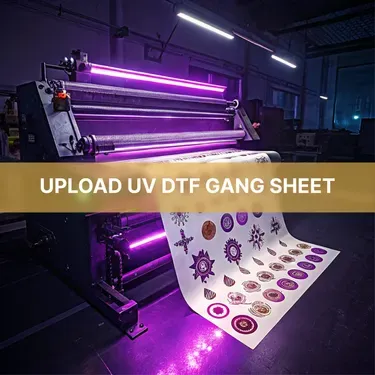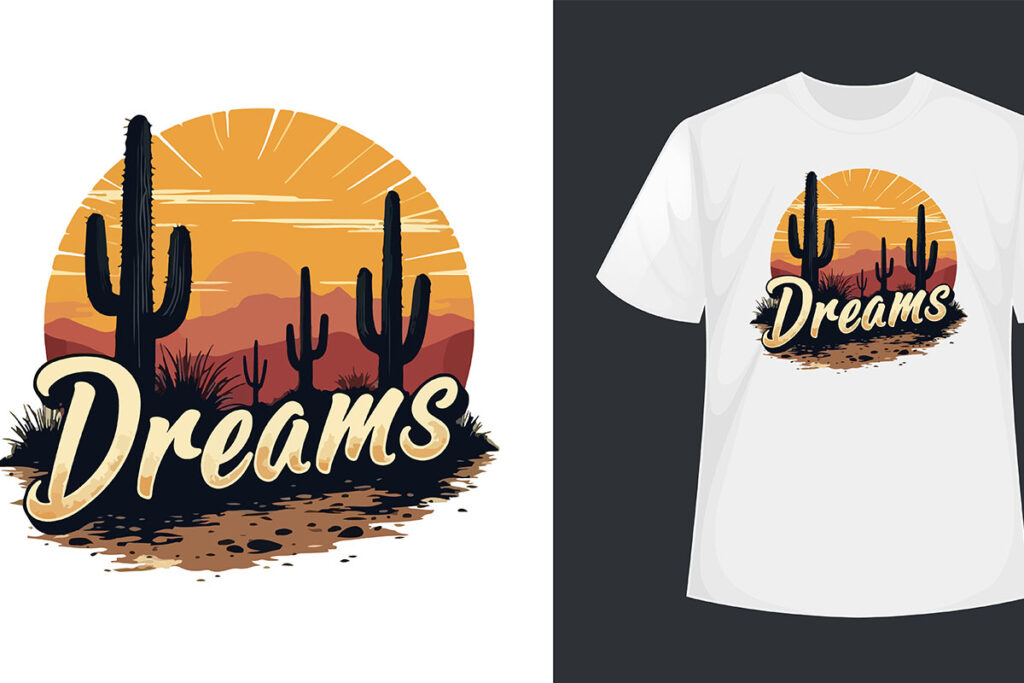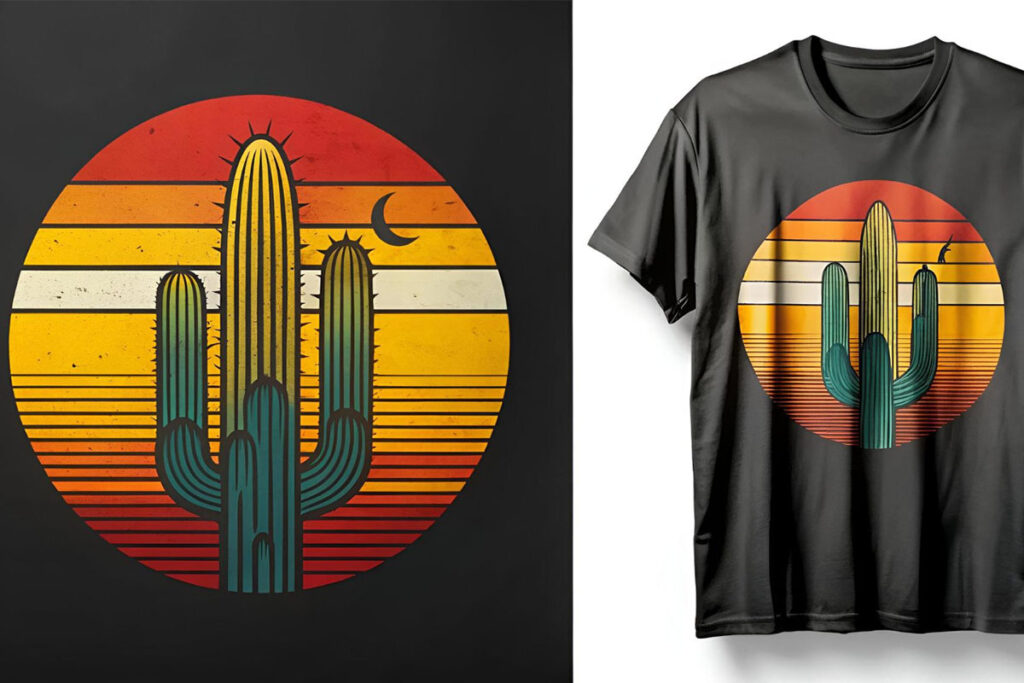When it comes to cutting-edge innovations in printing, **UV DTF Gangheet** is rapidly making its mark as an essential player in the industry. This technology harnesses the power of UV light to create stunning, high-quality prints that resonate with businesses and consumers alike. The **advantages of UV DTF** printing are noteworthy, offering versatility across various materials and ensuring durability that stands the test of time. As we navigate the **future of printing technology**, eco-friendly solutions are becoming a priority, and UV DTF stands out for its low-emission inks. With its ability to deliver intricate designs and vibrant colors, UV DTF Gangheet is not just a trend; it’s a transformative force for modern printing.
Exploring the realm of UV DTF prints reveals a blend of revolutionary techniques and superior quality, often referred to as Direct to Film printing with UV curing. This advanced method allows for exceptional accuracy and a wide range of applications, catering to diverse industries—from fashion to signage. With a focus on eco-conscious printing approaches, businesses are increasingly leaning towards these innovative solutions that reduce harmful emissions while enhancing productivity. Recognized for their resilience and adaptability, UV DTF prints are capturing attention with their ability to produce intricate designs on varied surfaces. Thus, the landscape of printing technology is evolving, making way for a bright future that is both sustainable and rife with possibilities.
Overview of UV DTF Printing Technology
UV DTF (Direct to Film) printing is revolutionizing the way businesses approach their printing needs. This innovative technology combines direct printing techniques with ultraviolet curing to deliver high-quality prints rapidly. Traditional methods often face limitations in terms of substrate compatibility and durability; however, UV DTF breaks these boundaries by allowing vibrant colors and intricate designs to easily transfer onto a wide range of materials, from textiles to metals. The curing process that UV DTF utilizes means that inks bond seamlessly, resulting in striking visuals that last.
Moreover, UV DTF printing stands out by offering an eco-friendly alternative compared to conventional methods. The use of UV inks significantly reduces the emission of volatile organic compounds (VOCs), aligning with the growing trend toward sustainable printing solutions. Businesses can now produce striking graphics without compromising on environmental responsibility, making UV DTF a compelling choice for modern enterprises that value both quality and sustainability.
As the technology matures, we expect to see further innovations that enhance its capabilities, potentially opening new avenues for creative expression in various industries. Companies looking to remain competitive should consider integrating UV DTF technology into their workflow to harness these advantages.
In summary, UV DTF printing technology is reshaping the landscape of printing by providing high-quality results that are both durable and environmentally friendly. Its adaptability makes it an ideal solution for businesses seeking flexibility in material choices and design.
Advantages of UV DTF Printing for Businesses
The advantages of adopting UV DTF printing technology are manifold. One of the most notable benefits is its versatility in handling diverse materials. Unlike many traditional printing methods, UV DTF can effortlessly print on fabrics, plastics, metals, and other challenging surfaces. This versatility empowers businesses to respond to a wider variety of market needs, whether it involves custom apparel, signage, or promotional materials. The ability to cater to multiple applications with a single printing method streamlines operations and enhances productivity.
Additionally, the durability of UV DTF inks offers crucial advantages for businesses aiming for long-lasting results. The UV-cured inks are not only resistant to fading and scratching, but they also withstand water exposure, making them suitable for both indoor and outdoor applications. For businesses that emphasize quality and longevity in their products, UV DTF printing delivers outputs that meet these high standards, establishing their reputation in a competitive market.
Furthermore, businesses can achieve high accuracy and detail in their prints. The precision that UV DTF printing provides allows for stunning visuals, capturing every nuance and design element without compromise. This is particularly essential for high-end brands that differentiate themselves through attention to detail.
In conclusion, the strategic advantages of UV DTF printing—versatility, durability, and quality—position businesses for success in a rapidly evolving marketplace.
Eco-Friendly Innovations in UV DTF Printing
As environmental consciousness increases globally, the printing industry is undergoing significant transformations to adopt more sustainable practices. UV DTF printing is at the forefront of these innovations, representing a shift towards eco-friendly solutions. One of the most commendable features of UV DTF technology is its use of inks that emit fewer VOCs during the printing process. This reduction is not only beneficial for the environment but also for the health of workers in the printing facilities.
In addition to providing safe working conditions, the sustainability aspect of UV DTF printing resonates with consumers who are increasingly choosing brands that demonstrate environmental responsibility. Companies utilizing eco-friendly UV DTF techniques can promote their commitment to sustainable practices, enhancing their brand image and attracting environmentally-aware customers.
Moreover, these eco-friendly practices in UV DTF printing stem from technological advancements that prioritize sustainability without compromising on quality. The production of high-quality prints with minimal environmental impact is becoming a core expectation from consumers, and businesses that adopt UV DTF technology position themselves as forward-thinking leaders in sustainability.
In summary, the eco-friendly innovations in UV DTF printing highlight a significant leap towards greener practices in the industry, ensuring that businesses can fulfill their obligation to both their clients and the planet.
The Future Trends in UV DTF Printing
Looking forward, the future of UV DTF printing technology is bright, characterized by continued advancements and growing adoption rates across various industries. One prominent trend is the increasing integration of this printing method into commercial operations. Companies are recognizing the efficiency and quality that UV DTF provides, leading to its implementation for a range of applications, from promotional materials to custom merchandise.
Furthermore, ongoing technological innovations are set to enhance the capabilities of UV DTF printers. As manufacturers develop machines with improved speed and precision, businesses will benefit from quicker turnaround times and heightened productivity. Future advancements might also incorporate smart technology features, enabling seamless integration with digital workflows and online ordering systems.
As the demand for versatile printing solutions grows, businesses that adapt to these trends will see significant opportunities for expansion and innovation. Staying abreast of developments in UV DTF technology will empower firms to meet evolving consumer expectations and maintain a competitive edge.
In conclusion, the future of UV DTF printing technology promises to be dynamic and transformative, paving the way for new possibilities in the printing landscape.
Understanding the Mechanism of UV DTF Gangheet
At the core of UV DTF Gangheet lies a sophisticated mechanism that integrates modern printing techniques with the efficiency of UV curing. This process begins with the transfer film, onto which UV inks are printed. Once the inks are applied, they are immediately cured using ultraviolet light, ensuring a rapid drying process that contributes to the durability and vibrancy of the printed image. This unique approach differentiates UV DTF from other printing methods, showcasing its ability to handle various substrates seamlessly.
The role of UV inks in this mechanism is paramount, as they offer excellent adhesion and exceptional resistance to environmental factors. As UV DTF Gangheet continues to mature, we can anticipate developments that refine the printing process even further. Innovations might lead to new formulations of inks and transfer films that not only enhance print quality but also expand the materials that can be printed upon. This adaptability is crucial for businesses aiming to embrace the creative potential of printing.
In summary, understanding the mechanism of UV DTF Gangheet enables businesses to leverage this technology effectively for optimal results and creativity in their printing projects.
Choosing UV DTF Printing for High-Quality Outputs
When it comes to producing high-quality prints, UV DTF printing emerges as a top choice for businesses seeking excellence in their output. The precision offered by UV DTF technology allows for intricate designs and vibrant colors that capture attention and elevate brand presentations. Especially for businesses in the fashion, advertising, or art sectors, the ability to produce detailed and high-impact visuals is crucial for standing out in a saturated market.
Moreover, the reliability of the printed outputs adds to the appeal of UV DTF printing. The resilience of UV-cured inks ensures that the prints maintain their quality over time, resisting common issues such as fading or wear. Businesses can confidently offer products that not only look impressive upon delivery but also stand the test of time in everyday use.
Consequently, opting for UV DTF printing positions a business to deliver exceptional quality while satisfying customer expectations for superior product offerings. In an increasingly discerning market, high-quality outputs are not just an option but a necessity for success.
In conclusion, choosing UV DTF printing unlocks the potential for businesses to achieve remarkable print quality, ultimately leading to enhanced customer satisfaction and loyalty.
Frequently Asked Questions
What is UV DTF Gangheet and how does it work?
UV DTF Gangheet refers to the innovative UV DTF (Direct to Film) printing technology that utilizes ultraviolet light to cure inks on a special transfer film. This method allows for high-quality prints with vibrant colors and intricate designs on various substrates, including textiles and hard surfaces, making it a versatile choice for modern printing applications.
What are the advantages of UV DTF printing technology?
The advantages of UV DTF printing technology include its versatility to print on diverse materials, exceptional durability of prints resistant to scratches and fading, eco-friendly ink options with lower VOC emissions, and high accuracy that delivers detailed and vibrant graphics. These benefits make UV DTF Gangheet an attractive option for businesses focused on quality and sustainability.
How does UV DTF Gangheet contribute to eco-friendly printing solutions?
UV DTF Gangheet contributes to eco-friendly printing solutions by using inks that emit fewer volatile organic compounds (VOCs) compared to traditional methods. This shift towards sustainable practices aligns with consumer preferences for environmentally conscious products, helping businesses reduce their ecological footprint while maintaining high-quality print outputs.
Can UV DTF Gangheet prints be used for both indoor and outdoor applications?
Yes, prints made using UV DTF Gangheet are highly durable and resistant to water, scratches, and fading, making them suitable for both indoor and outdoor applications. This durability ensures that products maintain their quality over time, catering to diverse business needs.
What is the future of printing technology with UV DTF Gangheet?
The future of printing technology looks promising with UV DTF Gangheet as it continues to gain popularity in commercial settings. Ongoing advancements in print speed, accuracy, and substrate versatility point towards a growing market, positioning UV DTF as a key player in the next generation of printing solutions.
How does UV DTF printing compare to traditional printing methods?
UV DTF printing technology offers several advantages over traditional methods, including faster production times, the ability to print on a wider range of materials, and superior print quality with vibrant colors and fine detail. Additionally, the eco-friendliness of UV DTF makes it a more sustainable option in today’s printing landscape.
| Key Points | Details |
|---|---|
| Understanding UV DTF Printing | UV DTF merges direct-to-film methods with UV curing technology for high-quality print results. |
| Key Components | UV Inks and Transfer Film facilitate vivid, detailed prints on a variety of surfaces. |
| Advantages | 1. Versatility across materials 2. Durable results 3. Eco-friendly inks 4. High accuracy and detail |
| Recent Trends | 1. Growing popularity in commercial applications 2. Technological innovations enhancing efficiency 3. Expanding market size for UV DTF solutions |
Summary
UV DTF Gangheet represents a transformative approach in printing technology, merging versatility with high-resolution results. As businesses strive for exceptional quality and efficiency, this innovative printing method stands out for its ability to adapt to various substrates while ensuring durability and precision. Not only does UV DTF provide vibrant colors and intricate designs on both hard and soft surfaces, but it also embraces eco-friendly practices, crucial for today’s sustainability-conscious market. The continuous advancements in UV DTF technology highlight its growing significance in the commercial printing landscape, paving the way for future innovations. To stay competitive, businesses should consider investing in UV DTF Gangheet as a strategic move that aligns with current consumer demands for quality, efficiency, and sustainability.



